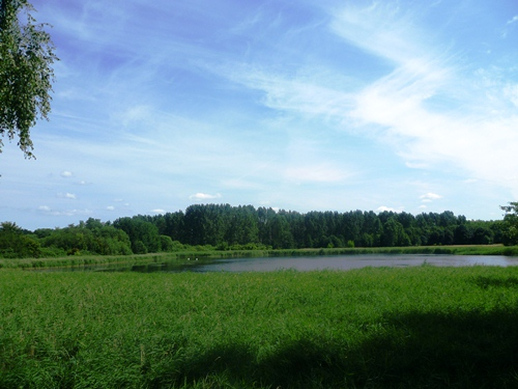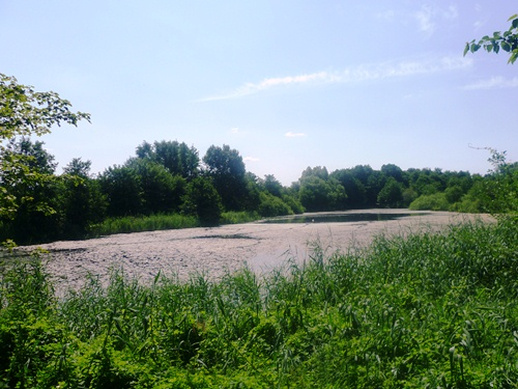Words & Pictures: Paul Scraton
On a sunny Sunday we decide to escape the heat of Berlin by catching the S-Bahn north to the very edge of the city, where the Panke River runs alongside a small patch of marshland and meadows, pasture and ponds. We walk through suburban streets until a path takes us along the river bank and then in towards the Karow Ponds, a peaceful spot popular with strollers, runners and birdwatchers, where we can see bulls lounging in the fields and gaze across the ponds from viewing platforms to see cormorants, grebes, and a grey heron sunning itself on the far bank. Butterflies and dragonflies dart above the reeds, and an otter pulls itself ashore with a shake of its back. Berlin is a city filled with green spaces, but at moments like this I still marvel at the access we have to such places within a handful of minutes of our apartment, and how they managed to escape the rapid growth of the city that swallowed not only fields and forests, but entire villages, during the second half of the nineteenth century.
And then I look into the history of the Karow Ponds and discover that this corner of the city was as planned as any other, and that it is its very edgeland nature – neither city nor country – that has made it what it is. The four ponds were originally man made; two thanks to peat mining in the early nineteenth century, and two as gravel pits during the building of the Berlin-Stettin (present day Szcezecin) Railway a couple of decades later. They were then used for fish farming until the development of the city-wide sewage system that accompanied the dramatic increase in population that came with industrialisation and the unification of Germany in 1871 – with Berlin as its capital.
Under the Hobrecht Plan, which laid out exactly how such a rapid growth could be managed, 16,000 hectares of land on the edge of the city (about 23,000 football fields) were put aside as sewage fields, and the Karow Ponds were right in the middle of them. Sewage was pumped from the residential districts out to these fields, where the waste could be filtered through the soil. This had the immediate effect of ending fish farming in the Karow Ponds, and the whole area was left alone to its purpose, becoming over the following decades home to all kinds of flora and fauna that had otherwise been lost to the ever encroaching city.
By the 1980s modern sewage works meant that the huge swathes of sewage fields were no longer needed, but the value of these “wild” spaces on the edge of the city were soon recognised, and designated as a Naturschutzgebiet (NSG) – Nature Protection Zone in 1994. Exploring the Karow Ponds, ticking off the birds in our books and trying to work out the English names from the German information boards discretely tucked away along the path, I am reminded of the fact that more serious birdwatchers than I have always known; interesting birdlife can often be found near reservoirs and rubbish tips, abandoned sewage works or other edgeland spaces. Wildlife, squeezed from the countryside by modern agricultural methods, finds haven in the forgotten corners, as Mariod Shoard argued in her influential essay “Edgelands” in 2002: “So while town parks are grassed over for ball games and our national parks overgrazed by sheep, these truer wildernesses are allowed to find their own accommodation with Nature, evolving silently and unhindered.” Sometimes there is value in being ignored.
The Karow Ponds may now have a specific designation in the name of protection, but they are what they are, and are valued as such, thanks to a century of cleaning the waste of our city, left alone to a diverse mix of birdlife, rare frogs and toads, and other plant- and wildlife, and all a short walk from the S-Bahn home.
www.underagreysky.com

